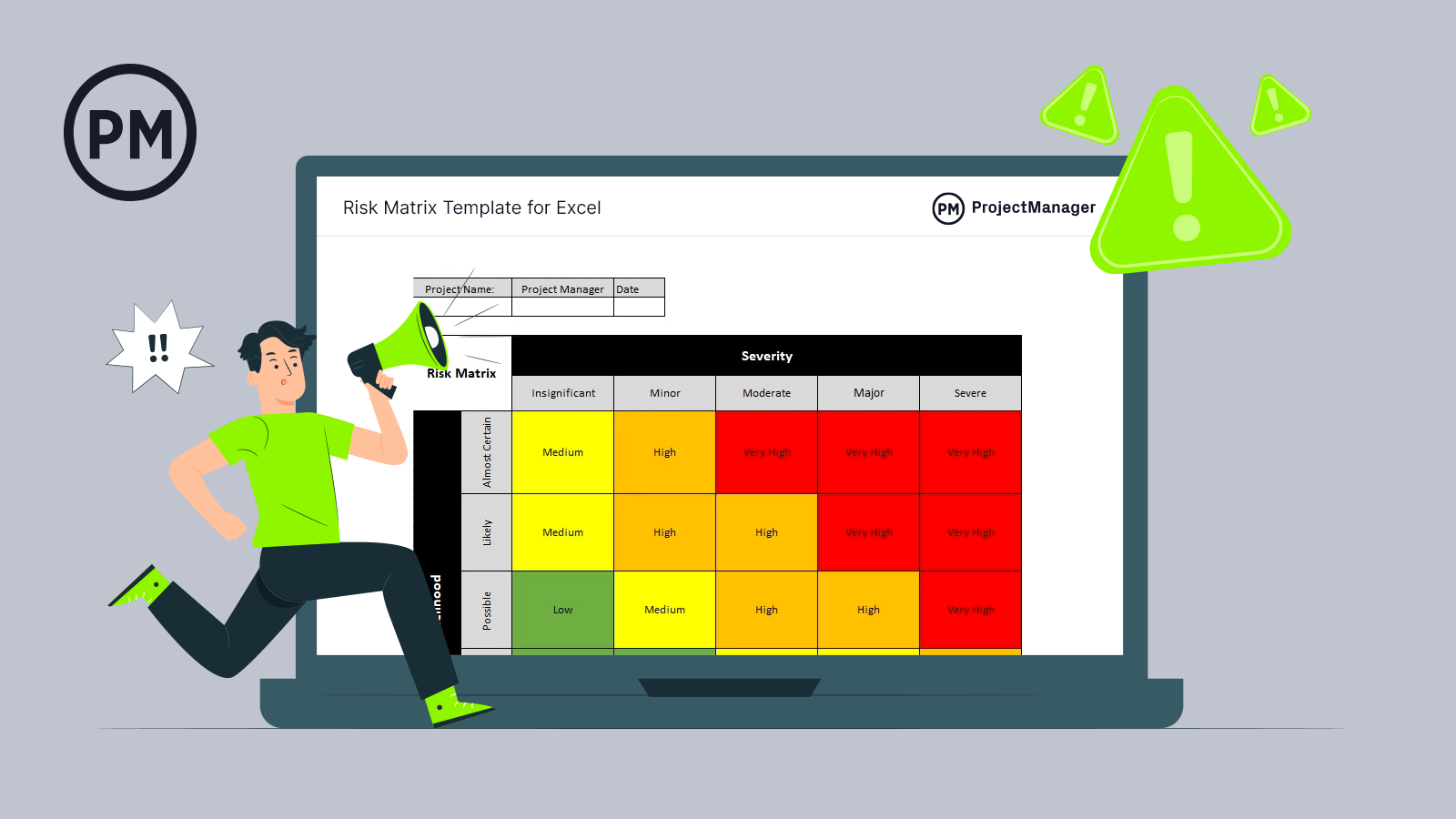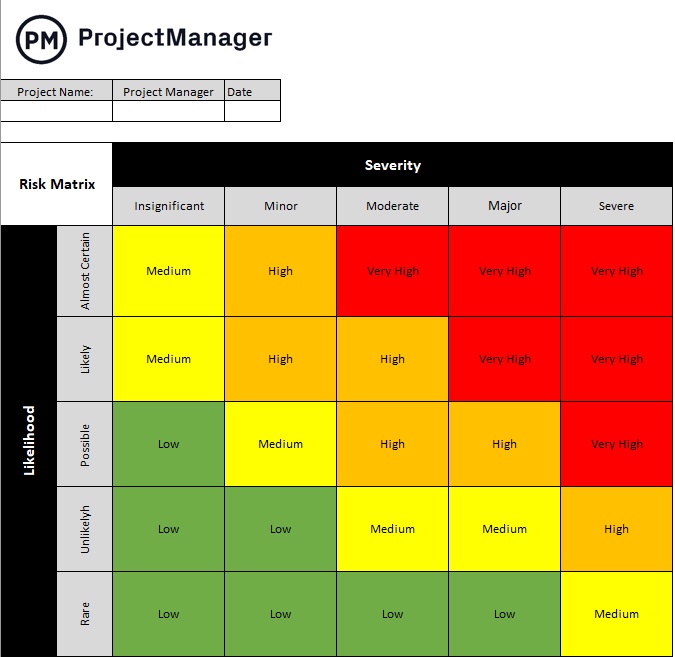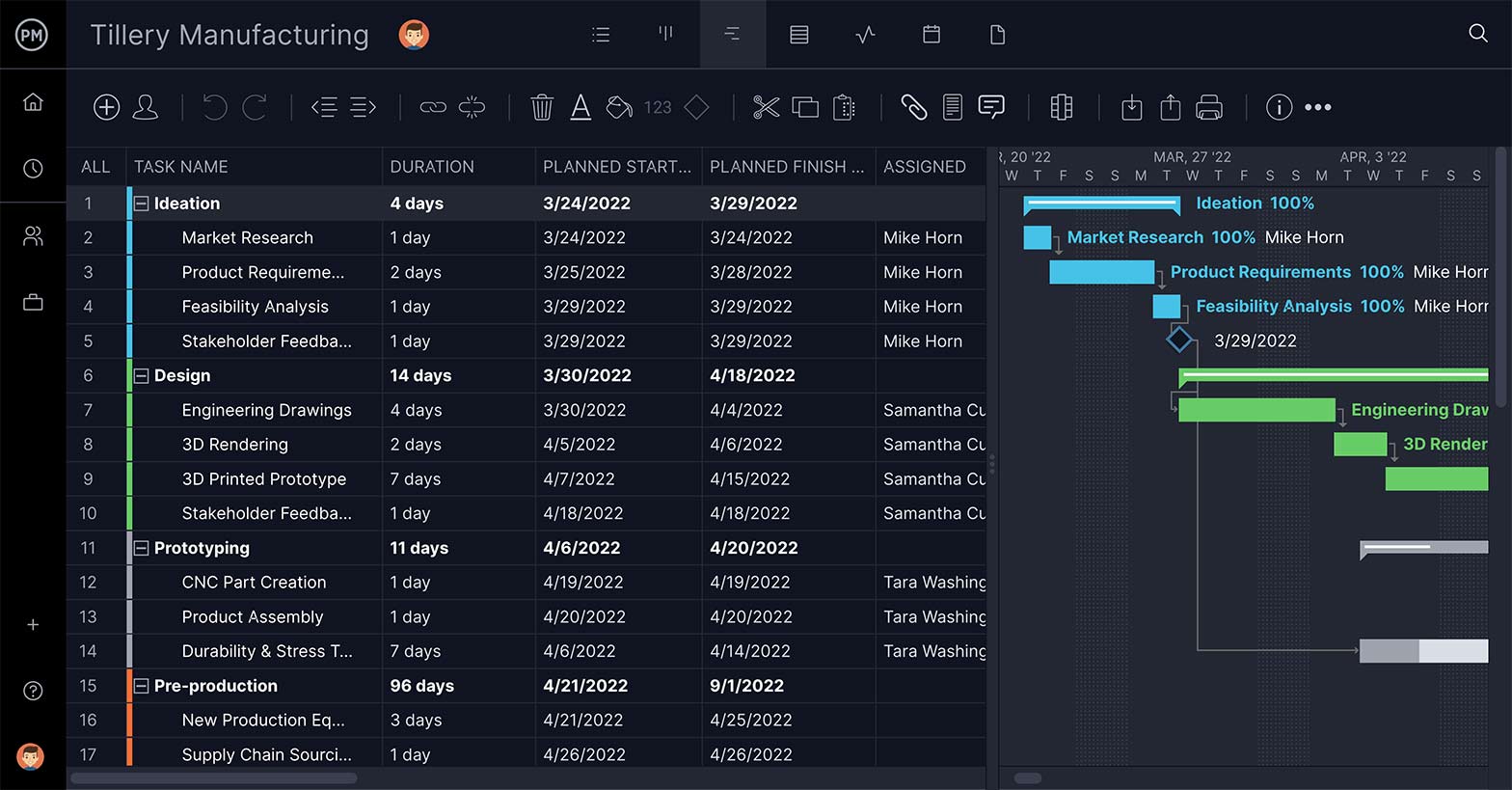When you start the planning process for a project, one of the first things you need to think about is: what can go wrong? It sounds negative, but pragmatic project managers know this type of thinking is preventative. Issues will inevitably come up, and you need a mitigation strategy in place to know how to manage risks when project planning.
But how do you work towards resolving the unknown? It sounds like a philosophical paradox, but don’t worry—there are practical steps you can take. In this article, we’ll discuss strategies that let you get a glimpse at potential risks, so you can identify and track risks on your project.
What Is Risk Management on Projects?
Project risk management is the process of identifying, analyzing and responding to any risk that arises over the life cycle of a project to help the project remain on track and meet its goal. Risk management isn’t reactive only; it should be part of the planning process to figure out the risk that might happen in the project and how to control that risk if it in fact occurs.
A risk is anything that could potentially impact your project’s timeline, performance or budget. Risks are potentialities, and in a project management context, if they become realities, they then become classified as “issues” that must be addressed with a risk response plan. So risk management, then, is the process of identifying, categorizing, prioritizing and planning for risks before they become issues.
Risk management can mean different things on different types of projects. On large-scale projects, risk management strategies might include extensive detailed planning for each risk to ensure mitigation strategies are in place if project issues arise. For smaller projects, risk management might mean a simple, prioritized list of high, medium and low-priority risks.

Get your free
Risk Matrix Template
Use this free Risk Matrix Template for Excel to manage your projects better.
How to Manage Project Risk
To begin managing risk, it’s crucial to start with a clear and precise definition of what your project has been tasked to deliver. In other words, write a very detailed project charter, with your project vision, objectives, scope and deliverables. This way risks can be identified at every stage of the project. Then you’ll want to engage your team early in identifying any and all risks.
Don’t be afraid to get more than just your team involved to identify and prioritize risks, too. Many project managers simply email their project team and ask to send them things they think might go wrong on the project. But to better plot project risk, you should get the entire project team, your client’s representatives, and vendors into a room together and do a risk identification session.
With every risk you define, you’ll want to log it somewhere—using a risk tracking template helps you prioritize the level of risk. Then, create a risk management plan to capture the negative and positive impacts of the project and what actions you will take to deal with them. You’ll want to set up regular meetings to monitor risk while your project is ongoing. Transparency is critical.
Project management software can help you keep track of risk. ProjectManager is online software that helps you identify risks, track them and calculate their impact. With our Risk view, you can make a risk list with your team and stay on top of all the risks within your project. Write a description, add tags, identify a resolution, mark impact and likelihood, even see a risk matrix—all in one place. Get started today with a free trial.

What Is Positive Risk in Project Management?
Not all risk is created equally. Risk can be either positive or negative, though most people assume risks are inherently the latter. Where negative risk implies something unwanted that has the potential to irreparably damage a project, positive risks are opportunities that can affect the project in beneficial ways.
Negative risks are part of your risk management plan, just as positive risks should be, but the difference is in approach. You manage and account for known negative risks to neuter their impact, but positive risks can also be managed to take full advantage of them.
There are many examples of positive risks in projects: you could complete the project early; you could acquire more customers than you accounted for; you could imagine how a delay in shipping might open up a potential window for better marketing opportunities, etc. It’s important to note, though, that these definitions are not etched in stone. Positive risk can quickly turn to negative risk and vice versa, so you must be sure to plan for all eventualities with your team.
Managing Risk Throughout the Organization
Can your organization also improve by adopting risk management into its daily routine? Yes! Building a risk management protocol into your organization’s culture by creating a consistent set of risk management tools and templates, with training, can reduce overhead over time. That way, each time you start a new project, it won’t be like having to reinvent the wheel.
Things such as your organization’s records and history are an archive of knowledge that can help you learn from that experience when approaching risk in a new project. Also, by adopting the attitudes and values of your organization to become more aware of risk, your organization can develop a risk culture. With improved governance comes better planning, strategy, policy and decisions.
Free Risk Matrix Template
To manage project risks throughout your organization, it’s important to create a risk matrix. A risk matrix is going to help you organize your risks by severity and likelihood, so you can stay on top of potential issues that threaten the greatest impact. Try this free risk matrix template for Excel so you and your team can organize project risks.

In addition to this risk matrix template, we have created more free risk management templates for Word and Excel.
6 Steps in the Risk Management Process
So, how do you handle something as seemingly elusive as project risk management? You make a risk management plan. It’s all about the process. Turn disadvantages into an advantage by following these six steps.
Identify the Risk
You can’t resolve a risk if you don’t know what it is. There are many ways to identify risk. As you do go through this step, you’ll want to collect the data in a risk register.
One way is brainstorming with your team, colleagues or stakeholders. Find the individuals with relevant experience and set up interviews so you can gather the information you’ll need to both identify and resolve the risks. Think of the many things that can go wrong. Note them. Do the same with historical data on past projects. Now your list of potential risks has grown.
Make sure the risks are rooted in the cause of a problem. Basically, drill down to the root cause to see if the risk is one that will have the kind of impact on your project that needs identifying. When trying to minimize risk, it’s good to trust your intuition. This can point you to unlikely scenarios that you just assume couldn’t happen. Use a risk breakdown structure process to weed out risks from non-risks.
Analyze the Risk
Analyzing risk is hard. There is never enough information you can gather. Of course, a lot of that data is complex, but most industries have best practices, which can help you with your risk analysis. You might be surprised to discover that your company already has a framework for this process.
When you assess project risk you can ultimately and proactively address many impacts, such as avoiding potential litigation, addressing regulatory issues, complying with new legislation, reducing your exposure and minimizing impact.
So, how do you analyze risk in your project? Through qualitative and quantitative risk analysis, you can determine how the risk is going to impact your schedule and budget.
Project management software helps you analyze risk by monitoring your project. ProjectManager takes that one step further with real-time dashboards that display live data. Unlike other software tools, you don’t have to set up our dashboard. It’s ready to give you a high-level view of your project from the get-go. We calculate the live date and then display it for you in easy-to-read graphs and charts. Catch issues faster as you monitor time, costs and more.

Prioritize Risks & Issues
Not all risks are created equally. You need to evaluate the risk to know what resources you’re going to assemble towards resolving it when and if it occurs.
Having a large list of risks can be daunting. But you can manage this by simply categorizing risks as high, medium or low. Now there’s a horizon line and you can see the risk in context. With this perspective, you can begin to plan for how and when you’ll address these risks. Then, if risks become issues, it’s advisable to keep an issue log so you can keep track of each of them and implement corrective actions.
Some risks are going to require immediate attention. These are the risks that can derail your project. Failure isn’t an option. Other risks are important, but perhaps do not threaten the success of your project. You can act accordingly. Then there are those risks that have little to no impact on the overall project’s schedule and budget. Some of these low-priority risks might be important, but not enough to waste time on.
Assign an Owner to the Risk
All your hard work identifying and evaluating risk is for naught if you don’t assign someone to oversee the risk. In fact, this is something that you should do when listing the risks. Who is the person who is responsible for that risk, identifying it when and if it should occur and then leading the work toward resolving it?
That determination is up to you. There might be a team member who is more skilled or experienced in the risk. Then that person should lead the charge to resolve it. Or it might just be an arbitrary choice. Of course, it’s better to assign the task to the right person, but equally important in making sure that every risk has a person responsible for it.
Think about it. If you don’t give each risk a person tasked with watching out for it, and then dealing with resolving it when and if it should arise, you’re opening yourself up to more risk. It’s one thing to identify risk, but if you don’t manage it then you’re not protecting the project.

Respond to the Risk
Now the rubber hits the road. You’ve found a risk. All that planning you’ve done is going to be put to use. First, you need to know if this is a positive or negative risk. Is it something you could exploit for the betterment of the project? If not you need to deploy a risk mitigation strategy.
A risk mitigation strategy is simply a contingency plan to minimize the impact of a project risk. You then act on the risk by how you prioritize it. You have communications with the risk owner and, together, decide on which of the plans you created to implement to resolve the risk.
Monitor the Risk
You can’t just set forces against risk without tracking the progress of that initiative. That’s where the monitoring comes in. Whoever owns the risk will be responsible for tracking its progress toward resolution. However, you’ll need to stay updated to have an accurate picture of the project’s overall progress to identify and monitor new risks.
You’ll want to set up a series of project meetings to manage the risks. Make sure you’ve already decided on the means of communication to do this. It’s best to have various channels dedicated to communication.
Whatever you choose to do, remember to always be transparent. It’s best if everyone in the project knows what is going on, so they know what to be on the lookout for and help manage the process.
In the video below, Jennifer Bridges, professional project manager (PMP) dives deeper into the steps in the risk management process.
Risk Management Templates
We’ve created dozens of free project management templates for Excel and Word to help you manage projects. Here are some of our risk management templates to help you as you go through the process of identifying, analyzing, prioritizing and responding to risks.
Risk Register Template
A risk register is a risk management document that allows project managers to identify and keep track of potential project risks. Using a risk register to list down project risks is one of the first steps in the risk management process and one of the most important because it sets the stage for future risk management activities.
Risk Assessment Template
This free risk assessment template helps project management teams describe risks in detail, including the risk category, risk source, likelihood, who the impacted stakeholders are, among other important risk management information.
Risk Matrix Template
A risk matrix is a project management tool that allows project managers to analyze the likelihood and potential impact of project risks. This helps them prioritize project risks and build a risk mitigation plan to respond to those risks if they were to occur.
Managing Risk With ProjectManager
Using a risk-tracking template is a start, but to gain even more control over your project risks you’ll want to use project management software. ProjectManager has a number of tools including risk management that let you address risks at every phase of a project.
Make an Online Risk Register
Identify and track all the risks for your project in one place. Unlike other project management software, you can manage risks alongside your project rather than in a separate tool. Set due dates, mark priority, identify resolutions and more.

Gantt Charts for Risk Management Plans
Use our award-winning Gantt charts to create detailed risk management plans to prevent risks from becoming issues. Schedule, assign and monitor project tasks with full visibility. Gantt charts allow team members add comments and files to their assigned tasks, so all the communication happens on the project level—in real time.

Risk management is complicated. A risk register or template is a good start, but you’re going to want robust project management software to facilitate the process of risk management. ProjectManager is an online tool that fosters the collaborative environment you need to get risks resolved, as well as provides real-time information, so you’re always acting on accurate data. Try it yourself and see, take this free 30-day trial.

